The largest study in the United States of religious belief, behavior, and practice is conducted every 4 to 5 years by MissionInsite. MissionInsite is a technology-based research group that provides data to thousands of organizations, mainly religious ones, around the country. They operate under the premise that “to love your neighbor, you must know your neighbor.” What follows is some key national research that impacts Catholicism. To benefit most from the research, it needs to be compared with the local situation. The results are from their 2022 study.
Religious Preference as Catholic
- 2012 – 23.1% of all Americans considered themselves Catholic
- 2022 – 24.9% consider themselves Catholic for an increase of 1.8% over the previous 10 years. The gain was greater for Catholicism than any other religious preference.
Observation: After a lengthy decline, the number of Americans who self-identify as Catholic is increasing. That does not mean, however, that the number of Catholics registering in parishes is also increasing.
Nones/No Religious Preference for a Congregation or Community
- 2012 – 23.6% of all Americans considered themselves “nones” or had no preference for a religious congregation or community
- 2022 – 20.8% consider themselves “nones” for a decrease of 2.8% during the previous 10 years. The decline was the greatest for all religious preferences.
Observation: After many years of increases, the number of nones is decreasing. That is a good sign but it is too early to determine what the ramifications may be.
Non-denominational/Independents (this includes many of the so-called “Big Box” churches)
- 2012 – 8.7% of all Americans considered themselves part of a non-denominational or independent religious community
- 2022 – 7.7% consider themselves part of a non-denominational community for a decrease of 1% during the previous 10 years.
Observation: For a period of time, non-denominational churches were making large in-roads among Catholics and mainstream Protestant denominations to the extent that they had become the second-largest denomination. That trend appears to be changing.
Baptist
- 2012 – 7.8% of all Americans considered themselves Baptist
- 2022 – 8.4% consider themselves Baptist for an increase of +.6% over the previous 10 years.
Observation: Not only is the number of Americans who self-identify as Baptist increasing, but all mainline Protestant denominations are also increasing. It seems that there is a trend away from being nones as well as joining non-denominational churches.
Percentage of Involvement of All Americans in a Religious Congregation or Community
- 4% are involved
- 6% are not involved
Observation: While there are some encouraging signs from this study, this data point is still cause for concern. Only about 1 of 3 Americans are involved in a religious congregation or community. This finding reinforces the need for Catholics in the United States to become more active in evangelization efforts. As the largest denomination, the Catholic Church is the only denomination with the size and resources to bring about a significant change and not just by focusing on Catholics or other denominations.
Trends Among Those Actively Involved in a Religious Congregation or Community
- 5% have made no change and are likely not to make a change
- 7% are likely to have ceased to be active
- 8% are likely to have become active again.
Observation: This finding can provide some helpful insights into the dynamics of a parish community. The vast majority of parishioners are stable in their connection to the parish. About 1 in 8 are thinking of either leaving the parish or becoming inactive. Another 1 of 25 are ready to become active.
Significance of Religious Faith to Life to All Americans (How important is faith in your life?)
- 23.5% no significance
- 15.9% minor significance
- 20.1% moderate significance
- 20.5% considerable significance
- 20.0% utmost significance
Observation: About 60% of Americans see faith as having a significant impact on their lives at least to a moderate degree. These populations can be reached to deepen their faith and to be motivated to a greater level of awareness about faith and life. The more difficult challenge from this survey point is to discover how to help people recognize the connection of faith with life so that there is a realization that faith can influence one’s life. This seems to be the survey area which indicates the influence which science and technology can have on faith.
Other research groups may arrive at different conclusions, but MissionInsite’s research is the largest and most in-depth study. What their research tells us has many implications for community life, community building as well as evangelization. The best way to use this research is to compare it with your own parish or diocese.


